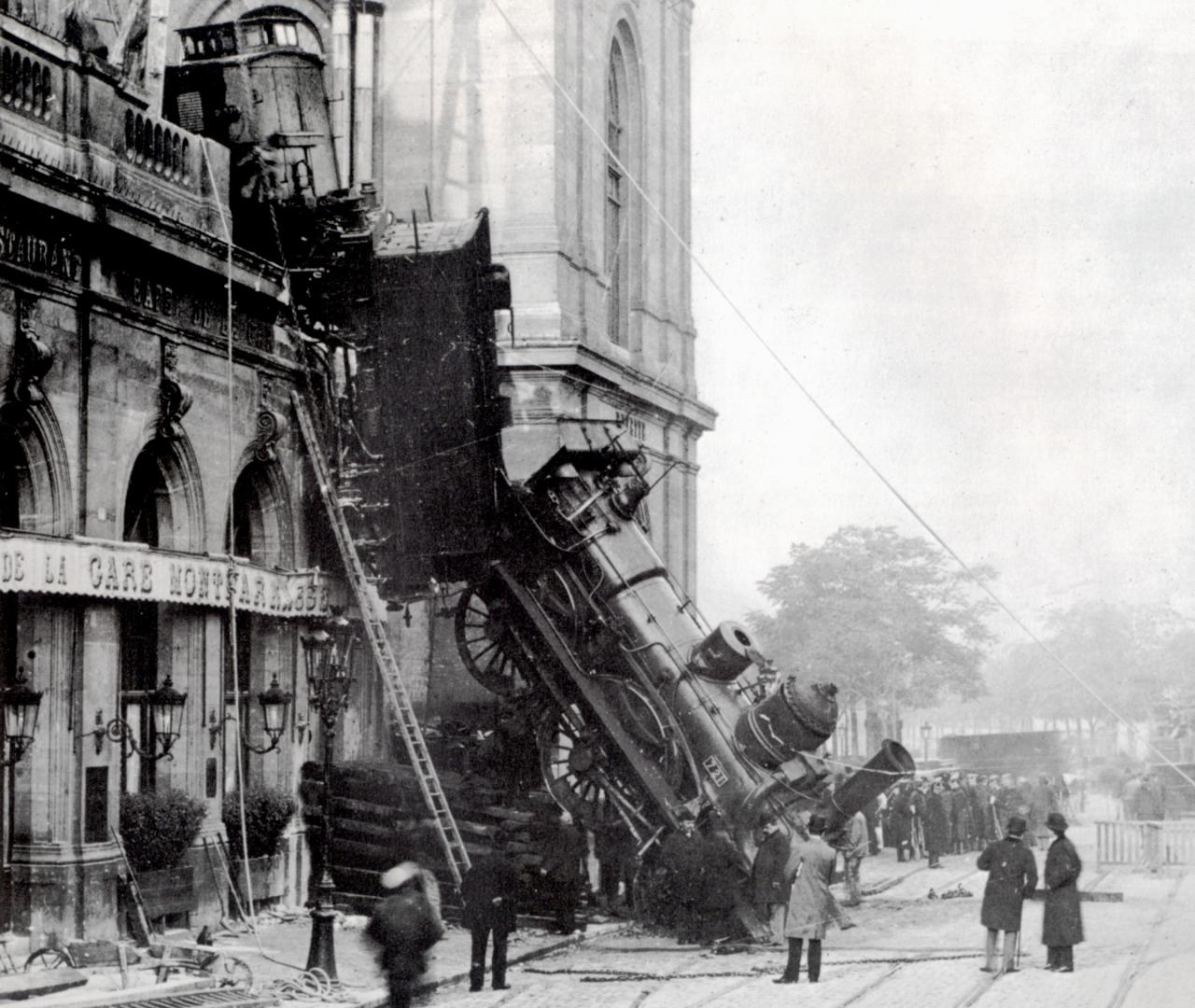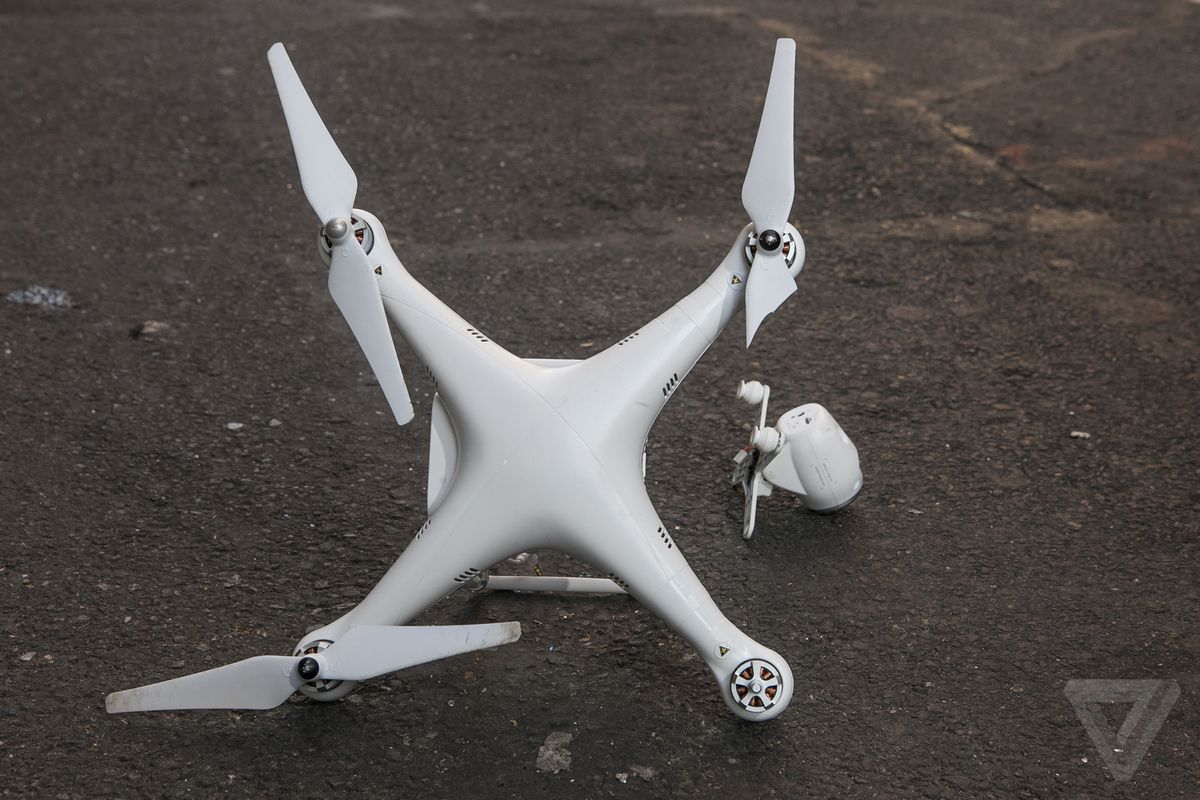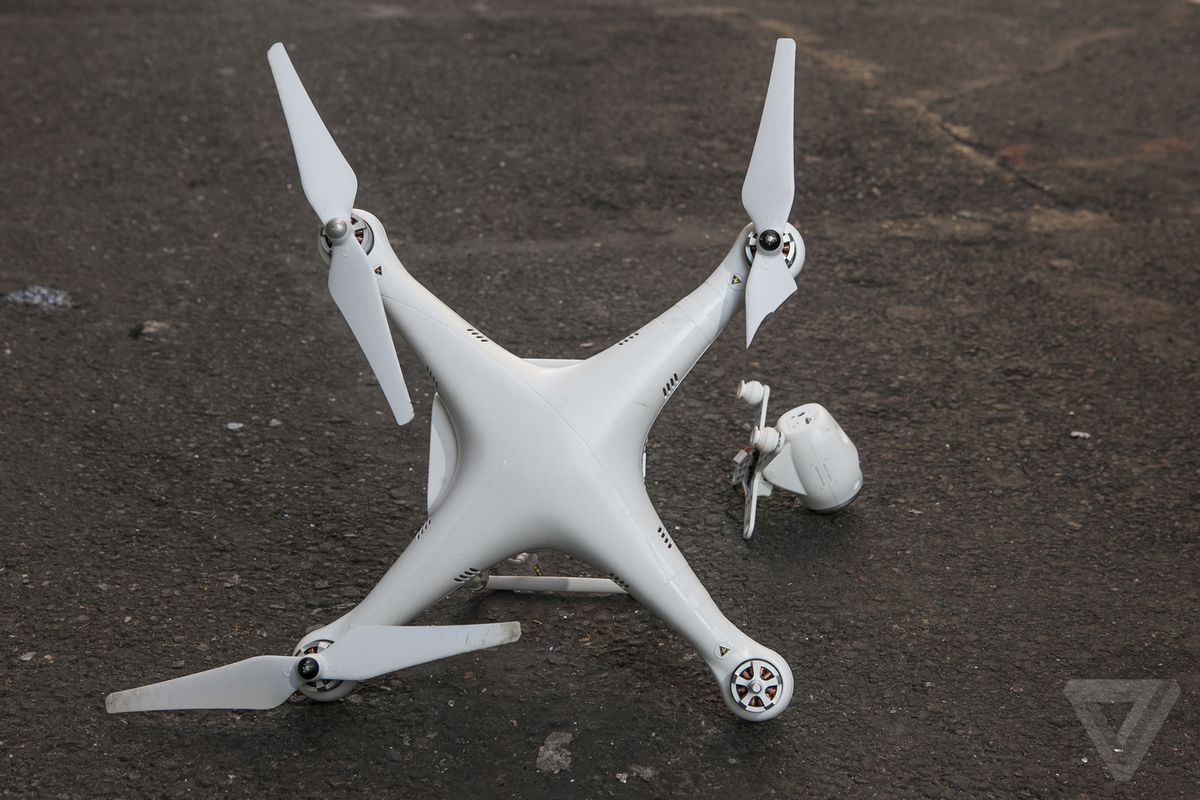Paris drone crash: The unexpected descent of a drone in the heart of Paris sparks questions about safety regulations, technological advancements, and the potential risks of unmanned aerial vehicles in densely populated areas. This incident highlights the urgent need for robust safety protocols and technological improvements to prevent future accidents.
We’ll explore the specifics of the crash, examining the drone’s characteristics, the timeline of events, and potential causes ranging from mechanical failure to human error. We’ll also delve into the legal and regulatory landscape surrounding drone operation in France, considering the implications for both the operator and public safety. Finally, we’ll look at technological advancements aimed at improving drone safety and preventing similar incidents.
Incident Details

The Paris drone crash, a significant event highlighting the potential risks associated with unmanned aerial vehicles (UAVs) in urban environments, occurred on a specific date and time. While precise details may vary depending on the official investigation’s final report, initial reports provided a framework for understanding the incident. This section details the circumstances surrounding the crash, including the drone’s characteristics and the timeline of events.
Crash Circumstances
The drone crash happened on [Insert Date] at approximately [Insert Time] in [Insert Specific Location in Paris]. Initial reports suggested [Insert Initial Reports of Damage or Injuries – e.g., minor property damage, no injuries]. The precise cause of the crash remains under investigation, but early speculation centered around [Insert Initial Speculation – e.g., possible mechanical failure, pilot error, or external factors].
The incident prompted immediate responses from local authorities and air safety officials.
Drone Specifications
The drone involved was reportedly a [Insert Manufacturer] [Insert Model]. This model is generally described as a [Insert Size Description – e.g., medium-sized, consumer-grade] drone with capabilities including [Insert Capabilities – e.g., high-resolution camera, GPS navigation, autonomous flight modes]. Further details regarding the drone’s specific configuration and firmware version are likely to emerge during the ongoing investigation.
Timeline of Events
The following table summarizes the key events in a chronological order, from the initial report to the current stage of the investigation. Note that this timeline may be subject to revision as the investigation progresses and more information becomes available.
| Date | Time | Location | Event Description |
|---|---|---|---|
| [Insert Date of Initial Report] | [Insert Time of Initial Report] | [Insert Location of Initial Report] | Initial reports of a drone crash in [Location]. |
| [Insert Date of Emergency Services Arrival] | [Insert Time of Emergency Services Arrival] | [Insert Location of Emergency Services Arrival] | Emergency services arrive at the scene and secure the area. |
| [Insert Date of Investigation Commencement] | [Insert Time of Investigation Commencement] | [Insert Location of Investigation Commencement] | Formal investigation into the cause of the crash begins. |
| [Insert Current Date] | [Insert Current Time] | [Insert Current Location of Investigation] | Investigation ongoing; further updates expected. |
Potential Causes

Determining the exact cause of the Paris drone crash requires a thorough investigation, encompassing both technical and human factors. Multiple contributing elements could have played a role, and it’s likely a combination of factors, rather than a single cause, led to the incident. Analyzing these potential causes helps in understanding the event and implementing preventative measures for future drone operations.
Technical Malfunctions
Several technical issues could have contributed to the drone crash. These malfunctions often cascade, meaning one initial problem triggers a chain reaction leading to complete system failure. For example, a battery failure, perhaps due to age, manufacturing defect, or extreme temperature exposure, could have resulted in a sudden power loss. This loss of power would likely cause the drone’s motors to stop functioning, resulting in an uncontrolled descent.
Similarly, a motor malfunction, perhaps due to a mechanical failure or short circuit, could lead to an imbalance in thrust, causing the drone to lose stability and crash. GPS issues, including signal loss or interference, could lead to inaccurate positioning and navigation, causing the drone to deviate from its intended flight path and collide with obstacles or the ground.
Human Error Factors
Human error plays a significant role in many drone accidents. Pilot inexperience could lead to improper handling of the drone, especially in challenging weather conditions or complex environments. Inexperienced pilots might struggle with emergency procedures or fail to adequately assess risks. Improper operation, such as exceeding the drone’s operational limits or ignoring safety warnings, could also lead to a crash.
For instance, flying beyond the maximum flight time or range recommended by the manufacturer could result in a battery failure mid-flight. Violations of regulations, such as flying in restricted airspace or neglecting mandatory safety checks, increase the risk of accidents. A pilot might disregard no-fly zones, leading to collisions with other aircraft or structures.
Likelihood Comparison, Paris drone crash
Based on general drone accident statistics, technical malfunctions and human errors are both significant contributors. The relative likelihood of each depends heavily on the specific circumstances of the incident. However, a combination of both is often observed. For example, a pilot might overload the drone’s battery, exceeding its operational limits (human error), leading to a premature battery failure (technical malfunction) that ultimately causes the crash.
Further investigation is needed to determine the precise weighting of technical and human factors in this particular case.
Causal Chain Flowchart
The following flowchart illustrates a possible sequence of events:[Description of Flowchart: The flowchart would start with a “Trigger Event” box, branching into two main paths: “Technical Malfunction” and “Human Error”. The “Technical Malfunction” path would branch further into sub-events such as “Battery Failure,” “Motor Malfunction,” and “GPS Issue,” each leading to a “Loss of Control” box. The “Human Error” path would similarly branch into sub-events like “Pilot Inexperience,” “Improper Operation,” and “Regulation Violation,” also leading to a “Loss of Control” box.
Both “Loss of Control” boxes would then converge to a final “Crash” box. Arrows would connect each box, indicating the causal flow.]
Regulatory and Legal Aspects
The drone crash in Paris necessitates a thorough examination of the relevant French and EU regulations governing drone operation, as well as the potential legal repercussions for those involved. Understanding these aspects is crucial for determining liability and preventing future incidents.The legal framework surrounding drone use in France is complex, drawing from both national and European Union legislation. This includes stipulations on registration, operator certification, flight restrictions in controlled airspace, and operational safety procedures.
Failure to adhere to these regulations can lead to significant legal consequences.
Relevant Drone Regulations in Paris and France
French drone regulations are primarily defined by the French Civil Aviation Authority (Direction Générale de l’Aviation Civile or DGAC). These regulations specify requirements for drone registration, pilot certification (depending on the drone’s weight and intended use), operational limitations (such as maximum altitude and distance from the operator), and mandatory safety features. Specific restrictions apply within Paris, particularly concerning flight over populated areas, landmarks, and airports.
Furthermore, European Union regulations, such as those concerning airspace management and unmanned aircraft systems (UAS), also play a significant role. Non-compliance with these regulations can result in substantial fines and potential criminal charges.
Potential Legal Ramifications
Depending on the investigation’s findings, the drone operator could face various legal ramifications, ranging from administrative fines to criminal charges. The severity of the penalties will depend on factors such as the extent of the damage caused, whether there was negligence or recklessness involved, and any injuries or fatalities resulting from the crash. Other parties, such as manufacturers or maintenance personnel, could also face legal action if their negligence contributed to the accident.
That Paris drone crash got everyone talking, right? It makes you wonder about the bigger picture of drone safety, especially in busy cities. To get a better understanding of the frequency of these incidents, check out this resource on drone crashes in Paris ; it’s pretty insightful. Knowing more about the overall trend helps put the recent Paris drone crash into better perspective.
Civil lawsuits from individuals or entities affected by the crash are also a possibility. For instance, if property damage occurred, the operator could be held liable for the repair or replacement costs.
Drone Accident Investigation Process in France
The investigation of drone accidents in France typically involves several agencies, including the DGAC, local law enforcement, and potentially other specialized investigators depending on the circumstances. The process begins with securing the crash site, collecting evidence (such as drone wreckage, flight logs, and witness statements), and interviewing potential witnesses. A detailed technical analysis of the drone and its components will be undertaken to identify potential mechanical or software failures.
The investigation aims to determine the cause of the accident and identify any contributing factors, including human error, mechanical failure, or regulatory non-compliance. The findings of the investigation will be crucial in determining legal liability and informing future safety regulations.
Legal and Regulatory Considerations Impacting the Investigation
The outcome of the investigation will be significantly influenced by several legal and regulatory considerations:
- The drone operator’s compliance with existing regulations regarding registration, certification, and operational limitations.
- Evidence of negligence or recklessness on the part of the operator or any other involved parties.
- The extent of damage caused by the crash, including property damage and potential injuries or fatalities.
- The applicability of relevant French and EU laws pertaining to drone operation and liability.
- The quality and completeness of the evidence collected during the investigation.
- The interpretation of technical data and flight logs.
- The potential for civil lawsuits and their impact on the legal proceedings.
Public Safety Implications
Drone accidents, particularly in populated areas, present significant risks to public safety. The potential for injury or death from falling drones, as well as the disruption of air traffic and emergency services, necessitates a comprehensive understanding of the associated dangers and the effectiveness of current mitigation strategies.The potential for harm from a drone crash depends heavily on factors like the drone’s weight, speed, and the location of the impact.
Larger, heavier drones carrying substantial payloads pose a considerably greater threat than smaller, lighter models. The consequences are magnified in densely populated areas where the likelihood of striking a person or damaging property is significantly higher.
Safety Measures to Mitigate Risks
Numerous safety measures are implemented to minimize the risks associated with drone operation. These include mandatory registration of drones, pilot licensing requirements, geo-fencing technology that restricts drone flight in sensitive areas (such as airports or stadiums), and the use of obstacle avoidance systems on the drones themselves. Furthermore, strict adherence to operational guidelines, including maintaining visual line of sight and adhering to altitude restrictions, is crucial.
However, the effectiveness of these measures varies, and human error remains a significant factor in many accidents.
Effectiveness of Current Safety Regulations and Suggested Improvements
While existing regulations have improved safety, they are not without limitations. Enforcement challenges, gaps in international standardization, and the rapid evolution of drone technology create ongoing safety concerns. Improvements could include more robust enforcement mechanisms, harmonized international standards, enhanced pilot training programs that incorporate advanced risk management techniques, and the development of more sophisticated, reliable obstacle avoidance systems.
Regular reviews and updates of safety guidelines are also essential to adapt to the ever-changing landscape of drone technology.
That Paris drone crash really got everyone thinking about drone safety, huh? It makes you wonder about the infrastructure needed for widespread drone use, like the carefully planned zones for things like amazon drone delivery locations. Considering how precise those delivery routes need to be, the Paris incident highlights the importance of robust safety protocols for all drone operations, especially in densely populated areas.
Illustrative Scenario of a Drone Crash in a Populated Area
Imagine a bustling city square, filled with families enjoying an afternoon picnic. Suddenly, a large drone, possibly carrying a heavy camera or other payload, malfunctions mid-flight. It plummets from a considerable height, its propellers spinning wildly as it falls. The drone crashes into a crowded section of the square, striking several people and scattering debris across the area.
So, you heard about that Paris drone crash? It’s a pretty big deal, especially considering the potential impact on air traffic. To get the full lowdown on what happened and the ongoing investigation, check out this article about the incident: paris drone crash. Understanding the details of this Paris drone crash is key to improving drone safety regulations.
Screams erupt as bystanders rush to assist the injured. The resulting chaos disrupts the flow of pedestrian traffic, and emergency services struggle to reach the scene amidst the commotion. The aftermath includes multiple injuries, property damage, and significant disruption to public life. This vividly illustrates the potential for severe consequences resulting from drone accidents in populated areas.
Technological Advancements and Mitigation Strategies: Paris Drone Crash
The Paris drone crash highlights the urgent need for improved drone safety technology and stricter operational protocols. Technological advancements are crucial in mitigating future risks and ensuring responsible drone use in increasingly congested airspace. This section explores specific technological solutions and best practices that can enhance drone safety and prevent similar incidents.
Several technological improvements are already being developed or implemented to enhance drone safety. These focus on improving autonomous capabilities, enhancing situational awareness, and strengthening communication systems. This, in turn, reduces the likelihood of human error, a key factor in many drone accidents.
Automatic Emergency Landing Systems
Automatic emergency landing systems (AELS) are designed to safely land a drone in case of communication loss, malfunction, or low battery. These systems utilize GPS, inertial measurement units (IMUs), and other sensors to identify a safe landing zone and execute a controlled descent. AELS can significantly reduce the risk of uncontrolled crashes, especially in densely populated areas. For example, many commercial drones now incorporate AELS that prioritize landing in open spaces and away from obstacles.
The effectiveness of these systems depends on the accuracy of the sensors and the availability of suitable landing zones.
Obstacle Avoidance Technology
Sophisticated obstacle avoidance technology is another critical safety feature. This technology utilizes a combination of sensors, such as lidar, radar, and cameras, to create a 3D map of the drone’s surroundings. The drone then uses this map to navigate safely around obstacles, including buildings, trees, and other aircraft. Advanced systems can even predict the trajectory of moving objects and adjust the drone’s flight path accordingly.
The increasing sophistication of these systems, driven by the needs of autonomous delivery and inspection drones, is steadily improving the safety profile of drone operations. For instance, the use of multi-sensor fusion – combining data from various sensors – allows for more robust obstacle detection and avoidance in challenging environments.
Best Practices for Safe Drone Operation in Urban Environments
Implementing best practices is as important as technological advancements. These include rigorous pre-flight checks, adherence to designated flight zones, and the use of appropriate safety protocols. Operators should also be properly trained and licensed to ensure they understand the risks involved and can react appropriately to unexpected situations. For instance, limiting flight speeds in urban areas and maintaining visual line-of-sight whenever possible can significantly reduce the risk of accidents.
Regular software updates to drones are also essential to incorporate the latest safety features and patches.
Mitigation Strategies Table
| Strategy | Description | Cost | Effectiveness |
|---|---|---|---|
| Automatic Emergency Landing Systems (AELS) | Systems that automatically land a drone in case of emergency. | Medium to High (depending on sophistication) | High – significantly reduces risk of uncontrolled crashes. |
| Obstacle Avoidance Technology | Utilizes sensors (lidar, radar, cameras) to detect and avoid obstacles. | Medium to High (depending on sensor suite and processing power) | High – reduces collision risk, particularly in complex environments. |
| Geo-fencing and Flight Restrictions | Software-based limitations on drone flight area. | Low to Medium (depending on software and implementation) | Medium – prevents flights in restricted areas but relies on operator compliance. |
| Drone Traffic Management Systems (DTMS) | Systems that coordinate and manage drone flights in a given airspace. | High – requires significant infrastructure investment. | High – improves airspace safety and efficiency, especially in busy areas. |
Final Review

The Paris drone crash serves as a stark reminder of the potential dangers of drones, even in controlled environments. While technology continues to advance, offering solutions like automatic emergency landing systems and enhanced obstacle avoidance, responsible operation and stringent regulations remain crucial. A multi-faceted approach, encompassing technological improvements, stricter enforcement, and improved public awareness, is necessary to mitigate future risks and ensure the safe integration of drones into our increasingly urbanized world.
Essential FAQs
What type of damage was caused by the Paris drone crash?
The extent of damage will depend on the specifics of the incident, which will be detailed in the main body of the report. This could range from minimal property damage to significant injury or fatality, depending on where the drone fell.
Were there any witnesses to the Paris drone crash?
The availability of eyewitness accounts will influence the investigation. Eyewitness testimony can provide valuable insights into the events leading up to the crash and the immediate aftermath.
What is the current status of the investigation into the Paris drone crash?
The investigation’s status will be updated throughout the report. This could range from ongoing investigation to concluded with findings and potential legal actions.
